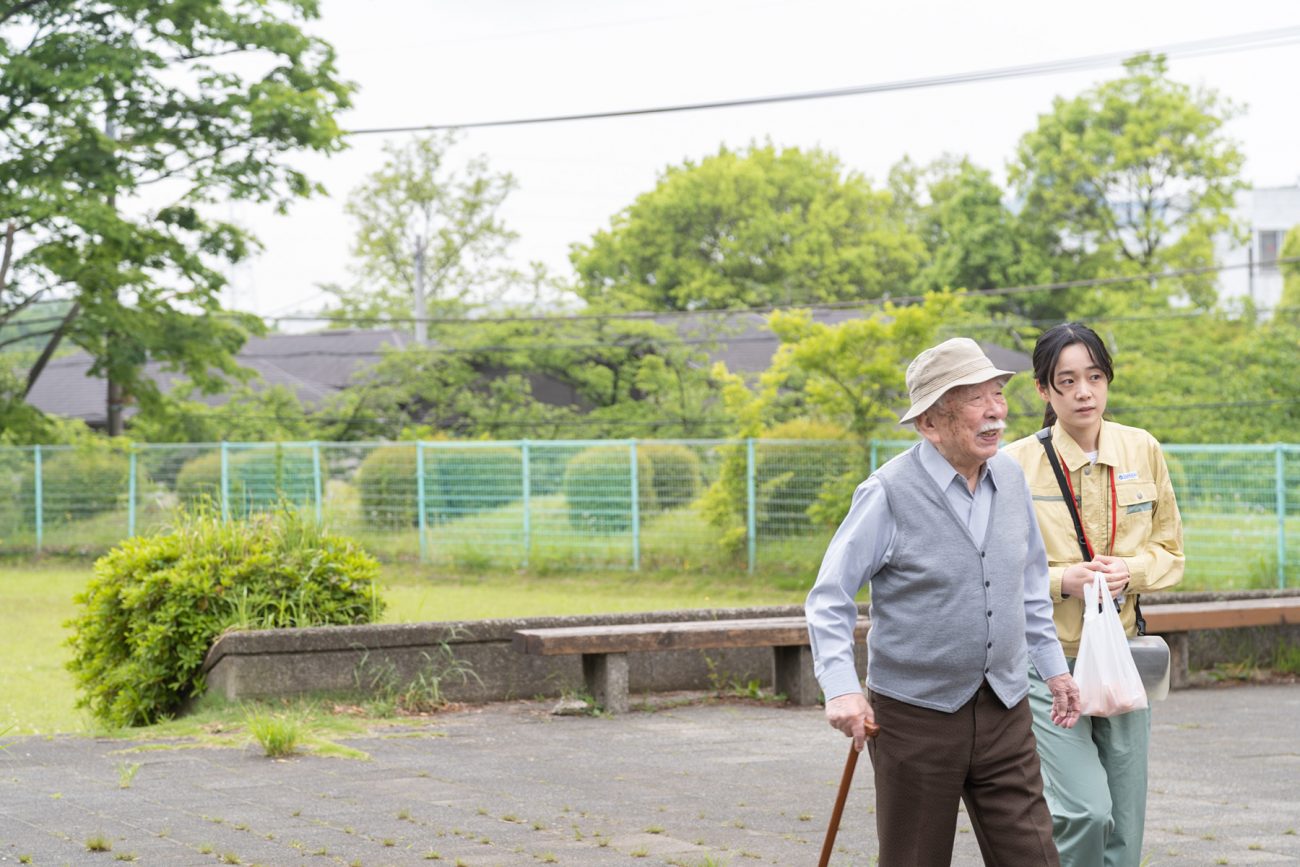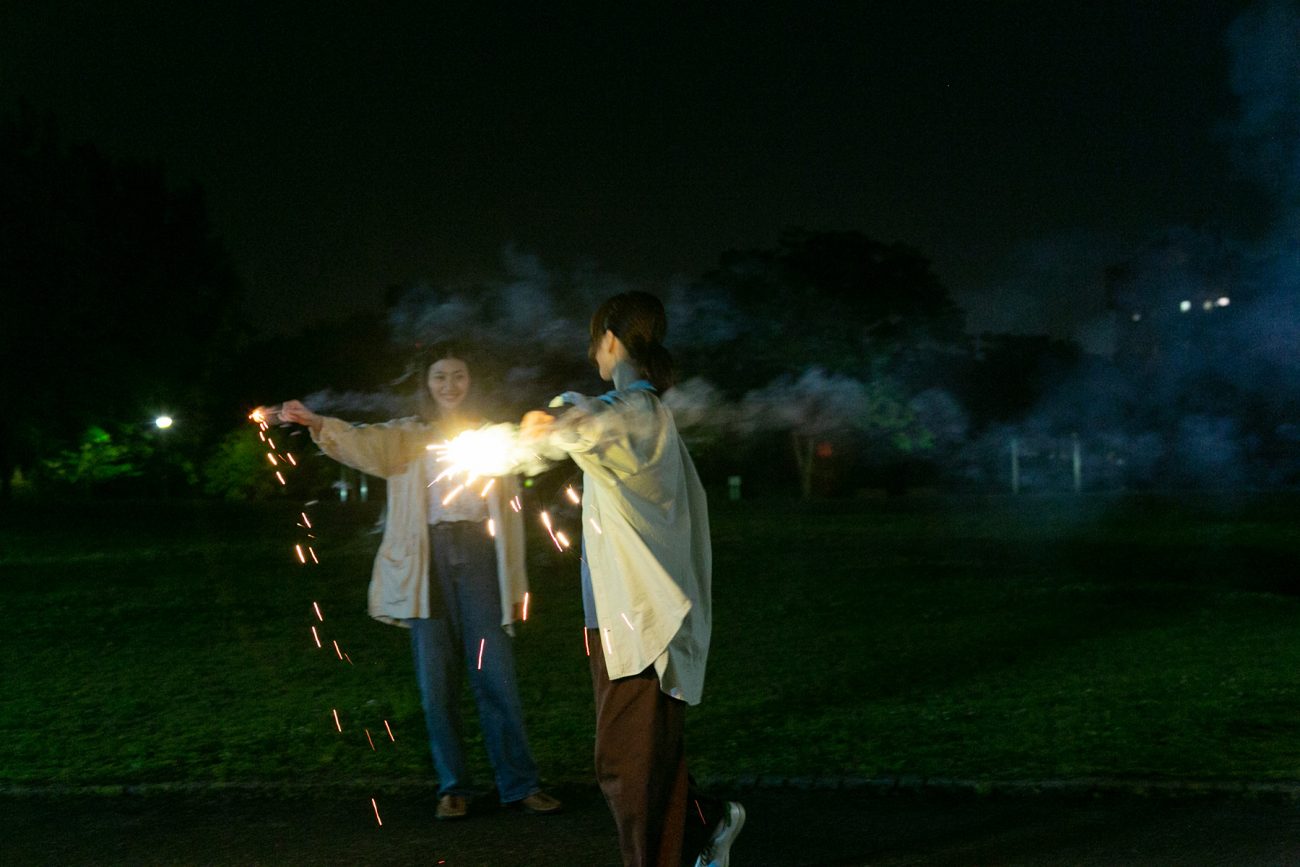Memory is a theme that resonates profoundly through both of director Yui Kiyohara’s films Our House and Remembering Every Night, manifesting through different forms, including its absence.
Kiyohara’s debut feature Our House is an unconventional haunted house film executed in a grounded manner where memory takes the form of ghosts. Thirteen-year-old Seri (Nodoka Kawanishi) lives with her widowed mother (Yukiko Yasuno). Seri cannot let go of her father’s memory and believes the things that go bump in the night are his ghost. The parallel story of another two women who occupy the same house involves Sana (Mariwo Osawa), who wakes up on a ferry with no memories and is taken in by Toko (Mei Fujiwara). The two sets of women never meet despite living in the same house and seem to exist in parallel universes.
In Kiyohara’s second film Remembering Every Night, memory takes on more traditional forms through photography, video and oral recollection. For Tama New Town, the housing development where the film is set, the museum preserves the memories of the community. For a film that takes place primarily during the day around the town, it’s a fair question to wonder while watching the film why it is titled “Remembering Every Night”. But director Yui Kiyohara has shared that she titled it that way as she was thinking about how everyone, not just the characters in her film, may reflect on their day at night. Even though most of the film is unhurried and calm, there is an undercurrent of anxiousness to record memories before they fade away, whether it be via technology of the stories we share.

Tama New Town in the evening. From Remembering Every Night (2022)
ON TRANSIENCE
It seems incredible that in this day and age of technology we would be able to lose our way, lose memories, or lose contact with people. Wasn’t social media supposed to help us keep in touch with others? But as Kiyohara’s films show, any kind of loss — be it death, data, or memories — is inevitable, with everything becoming more transient in spite of, or even because of, rapidly evolving technology.
In Remembering Every Night, the demographics of Tama New Town’s residents reflect this transience. Multiple universities located in the area mean that we see many young people cycling about in the film, including final year university student Natsu (Ai Mikami). But this means they will only be there for a short while, moving away as soon as they graduate.
Also in Tama New Town, Sanae (Minami Ohba), a gas meter reader in her 30s, interacts daily with the many elderly residents who have lived there since it was built in the 1970s. At her job, Sanae provides a small kindness listening to the older residents reminisce about their past. This includes an elderly woman who recalls how neighbours knew each other in the past but not anymore, and Mr Takada (Tadashi Okujno), a nonagenarian with senile dementia who remembers where he lived before, but has forgotten about his present living situation. In fact, Mr Takada was reported missing from his home by his family in the morning, which Sanae learns of and attempts to return him home. It is through this gesture that we are reminded that ‘loss’ only comes about when there is something to lose. Despite Mr Takada’s lost memories, he has loved ones who care for him, something precious considering the growing number of “lonely deaths” amongst Japan’s elderly population. Both Tama New Town’s youthful and elderly residents are a reminder of how transient our human connections are.

Sanae helping Mr Takada (Tadashi Okujno) find his way home. From Remembering Every Night (2022)
Meanwhile, the story of Chizu (Kumi Hyodo) shows how fleeting relationships can be once we reach middle-age. “Does that mean it just ends like that?” Chizu wonders out loud. The quiet shock and finality in her tone could apply to a number of situations in the film. But here, it refers to Chizu’s attempt to reconnect with someone from her past, only to discover her only link to them is now gone. In her 40s, Chizu recently lost her job and finds herself with some time on her hands, so she decides to “do something different” and finally visits a friend who mailed her a postcard long ago. Led only by the listed address, Chizu spends the day finding her way there, getting lost multiple times even with the aid of her smartphone. The failure of digital maps to bring Chizu to where she wants to go highlights our reliance on modern technology to maintain our connections, and in the end we find out that the friend has moved away already. How many times have we thought of reaching out to someone only to put it off because we were “too busy”? Chizu represents this common trend, reminding us of how tenuous our connections to others can be if we neglect to maintain those relationships.
ON BIRTHDAYS AND LOSS
Celebrations and anniversaries are times of human connection, and society’s way of ascribing significance to a memory. They can be evidence of life and of loss, as we find out in Remembering Every Night. When we are introduced to Chizu we learn that it is her birthday, which is her reason to “do something different” that day. For Natsu, that day happens to be the anniversary of the death of her boyfriend Dai, prompting her to visit his mother and seek out her high school friend Fumi (Guama Uchida) to recall fond memories of Dai.
Meanwhile, Sanae visits her friend Genya (Shintaro Yuya) in the Fujifilm shop where he works, converting home videos into digital format. Even though the videos are not Sanae’s, watching them triggers her own childhood memories. She recalls her past in hypnotic detail to Genya, the film transitioning into a montage of children’s birthdays shot on home video. When I asked the director why she included this video montage (which includes the director’s own childhood footage), she brought up how Chizu had no one to celebrate her birthday with, so this was one way to reflect on how Chizu’s birthday would be celebrated as a child. The home video montage is wonderfully evocative and emotionally immersive, recalling Sanae’s conversation with an elderly lady about how neighbours in Tama New Town used to help take care of each other and get together to throw birthday parties for the children. During her recollection of those days, the casualness with which the elderly woman’s son would ask her, “whose house do I go to today [after school]?” is a sad, yet warm memory. Although the elderly lady is regretful of not being able to spend more time with her son, it does highlight how close-knit the community was to collectively ensure children were looked after, making these birthday parties even more precious and special. Watching the video montage, I couldn’t help but think about how these birthday parties captured important memories, but were also evidence of all the time these parents lost with their children in their pursuit for a pie in Japan’s postwar boom. 1 Further Reading on Japanese family life during the 1980s – 2000s: Hashimoto, Akiko and Traphagan, John W., Changing Japanese Families, (Albany, State University of New York Press, 2008), Chapter 1, Page 9: The Transformation of Intimacy (1980s – 2000s). Accessed from: https://sunypress.edu/content/download/452020/5498933/version/1/file/9780791475775_imported2_excerpt.pdf 2 Further Reading on the role of men and women in the home during 1990s Japan. Imamura, Anne E., The Japanese Family from Video Letter from Japan II: A Young Family, (Asia Society, 1990), Page 6: The Family in Transition. Accessed from: http://www.columbia.edu/cu/weai/exeas/resources/pdf/japanese-family-imamura.pdf 3 Further reading on the failure of Japan’s ‘Angel Plan’ from 1994 and in providing support for parents in raising children: Roberts, Glenda S. Japan’s Evolving Family: Voices from Young Urban Adults Navigating Change, (Honolulu, Hawaii, East-West Center, 2016), Page 47-50: Balancing Work and Life: Obstructed at Every Turn (Happo Fusagari). Accessed from: https://www.eastwestcenter.org/sites/default/files/private/roberts-japanfamily.pdf.

Seri (Nodoka Kawanishi) in Our House (2017)
In Our House, Seri’s memories of her dead father are strongest during holidays and celebrations. A manifestation of the girl’s unresolved grief and fear of loss, her father haunts her actions as she skulks around the house, including playing a cruel prank on her mother’s new boyfriend at her fourteenth birthday party. As Seri and her mother are frequently dressed in cranberry red, it becomes both ironic and fitting then that another symbol of her father is a Christmas tree. In a pivotal scene, Seri leaves the house with the family Christmas tree strapped to the back of her bike, climbs up a hill, and plugs the tree into the soil where it inexplicably lights up, shining on her sorrowful face. It’s a deeply melancholic yet beautiful scene, telling us all we need to know about the joyful memories the Christmas tree bore witness to when her father was alive. Seri fears the changes in her mother’s relationship mean that her mother is forgetting her father. She also fears losing the house — where all those birthdays and Christmases were spent with her father — and eventually her connection to their time spent together there. If she loses those memories, who will remember her father? Her choice to mourn and leave the Christmas tree behind on the hill shows her confronting her loss and facing the irrational fears that caused the rift in her relationship with her mother. Letting go and moving on doesn’t mean forgetting. Mourning is an act of remembrance, and a way for Seri to mend the fractured relationship with her mother before risking yet another loss: a loss of connection.
RECORD OF MEMORIES

The faded sign of the Fujicolor shop to develop film was one of the most memorable images to me in Remembering Every Night (2022)
Memory — or lack of it — can also become a reminder of loss. “Being old means you have more to remember, because the older you get, the more memories you have. As people age, they tend to live in their memories,” Kiyohara said about her characters in Remembering Every Night. But as we are reminded by Mr Takada’s senile dementia and Sana’s memory loss in Our House, young or old, our minds and memories can fade and become increasingly fallible. This is perhaps why in the age of social media we obsessively record our present in an attempt to preserve these memories for the future. One of the most poignant images in Remembering Every Night is the old faded sign of the Fujifilm shop where Natsu is looking to pick up Dai’s photos. Tended by Genya, he tells her that the receipt is so out of date that it might be lost somewhere in the backroom. When Sanae visits, Genya is converting video tapes into digital format, helping others preserve their memories by updating the technology these moments were recorded on. Through this act of converting a memory from its original technological format to a newer one, Sanae is also able to view the tapes and access her own memories that were buried in her mind. Just like our own bodies, our relationships, our connections, and the pieces of technology we use, memories need to be tended to so that they won’t fade away and fall into disrepair.
Meanwhile, Natsu and her friend Emi play with fireworks as a way to commemorate Dai. They remark how Dai never liked to be in photographs, but he liked to take pictures of others. We never get to see Dai, but we get to feel his presence through Natsu and Emi’s recollections.In one of the final scenes of the film, we see Genya leaf through the photographs Dai took that Natsu hoped to retrieve, noticing they are also of Natsu and Emi playing with fireworks.

Fumi (Guama Uchida) and Natsu (Ai Mikami) playing with fireworks in Remembering Every Night (2022)
In our interview, Kiyohara mentioned that she liked film as a visual medium because of its ability to juxtapose the past and the present. In the simplest of transitions between a flashback of Natsu and Emi playing with fireworks with Dai into Genya finding the photos Dai took, Kiyohara captures exactly that magic she loves about film. Through such a simple editing choice by editor Azusa Yamazaki, Kiyohara shows that Dai’s memory will live on, tended to by those who loved him sharing and reliving their times together.
There’s a famous line from Pablo Neruda’s poetry: “love is so short, but forgetting is so long.” But in Kiyohara’s films, we know forgetting comes far too easily. Not necessarily by choice, but because of the nature of time. Memory recording, rediscovery and recollection is thus an act of care and love. It is through love that we keep those memories for a long time, and it is only because of love that there will be loss.
Both of Yui Kiyohara’s films, Our House and Remembering Every Night, will screen at New York’s Film at Lincoln Center from September 15, with further theatrical screenings of Remembering Every Night playing throughout the US.
